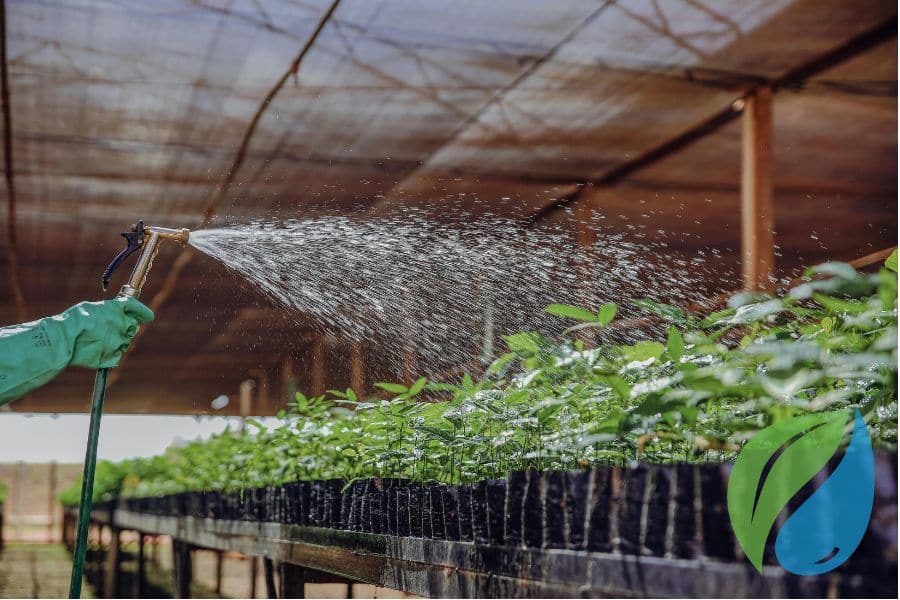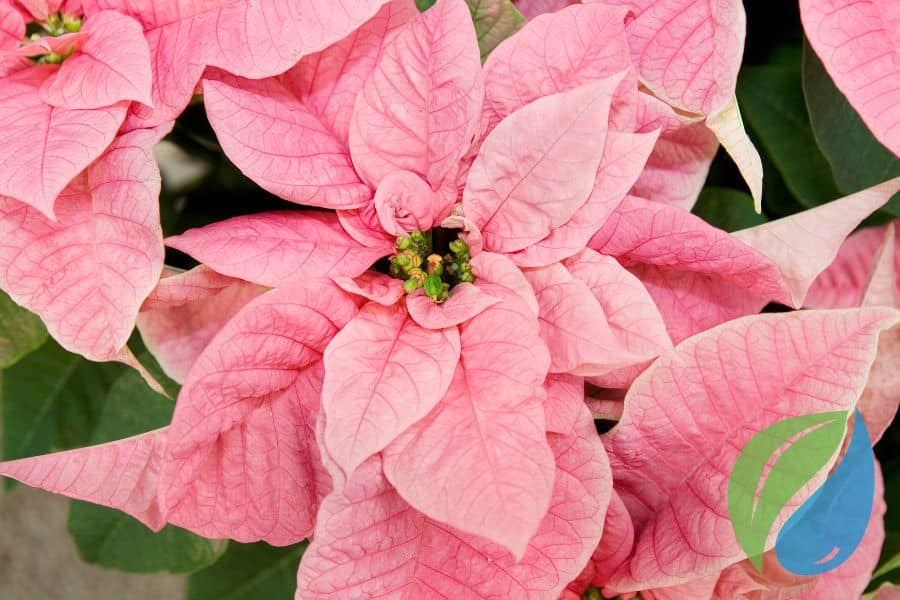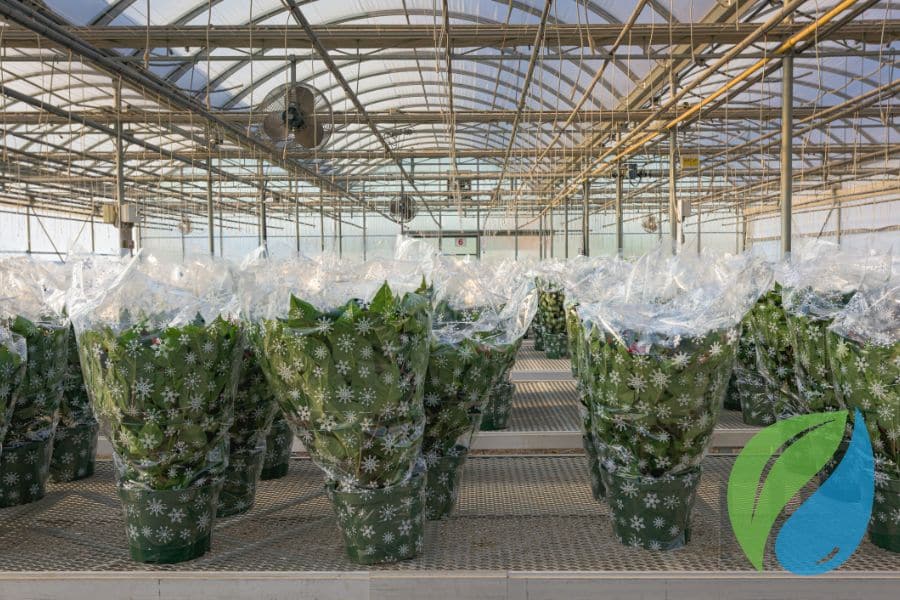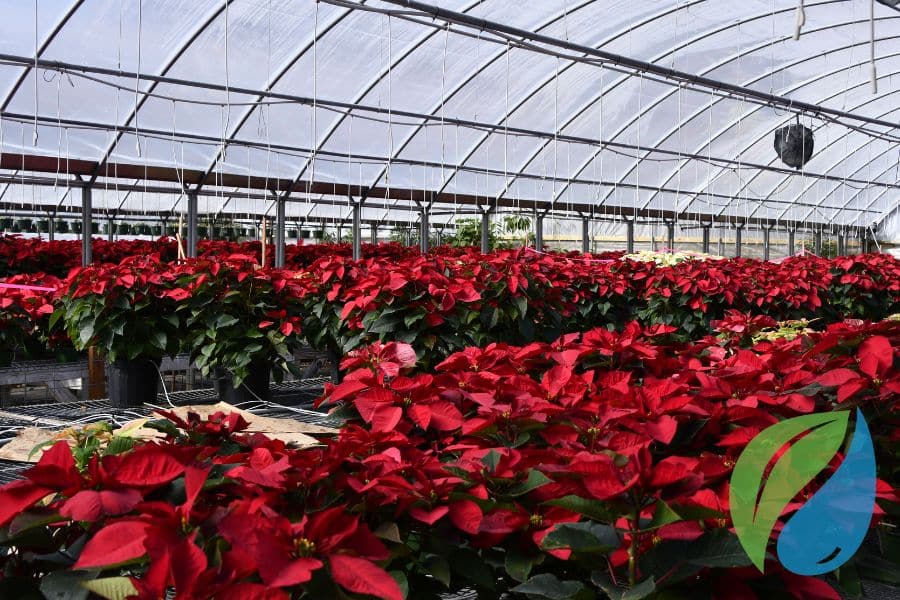It’s nearly the holiday season, which means your nursery or greenhouse will soon be inundated with poinsettias (if it isn’t already!). Keeping the most popular Christmas plant in the world healthy through the holiday season can be tricky without the right bacterial and fungal control product.
Phyton 27 bactericide and fungicide offers broad control of many diseases that affect poinsettias and other ornamentals. Its low risk of resistance build-up, wide compatibility, and broad label make it the idea choice for disease management at your greenhouse or nursery. Let’s take a closer look at the common poinsettia diseases Phyton 27 protects your plants from.
All-Season Diseases: Scab and Bacterial Leaf Spot
Scab and bacterial leaf spot are two diseases that affect poinsettias throughout the production cycle.
Scab
Scab appears as raised brown spots that are sometimes surrounded by a yellow ring. Larger areas may develop around the leaf edge and can affect the entire leaf. Scab can also affect the stem and other areas of the plant.
Bacterial Leaf Spot
Bacterial leaf spots on poinsettias can be caused by several different types of bacteria, including Pseudomonas and Xanthomonas. The spots appear as water-soaked areas on the leaf surface. When the spots dry out, they appear to be thin and have a paper-like appearance. The bacteria are spread by water splash and physical contact. Late-season high temperatures and high relative humidity can cause Pseudomonas and Xanthomonas to move from plant to plant.
Early-Season Diseases: Bacterial Stem Rot and Bacterial Soft Rot
Bacterial stem rot and soft rot most often affect poinsettias and other ornamentals during propagation. Both are caused by Erwinia carotovora. Bacterial stem rot and bacterial soft rot progress rapidly and can cause serious damage and even death in young plants. Damage from these diseases appears as a soft and wet area that looks like rotting lettuce. Erwinia is spread by moving infected plants, water splash, and contaminated tools, pots, and soil. Warm temperatures and high humidity accelerate disease spread.
Late-Season Diseases: Powdery Mildew and Botrytis
Powdery mildew and Botrytis are two diseases that affect poinsettias during late-season bract development and through the shipping season.
Powdery Mildew
Powdery mildew usually appears as a white powder on the poinsettia leaf surface. It typically appears near the end of the crop cycle when relative humidity is high. Powdery mildew is spread by air movement and water splash.
Botrytis
Botrytis is one of the most common diseases in finishing poinsettia crops. The Botrytis fungus causes gray spots on leaves and bracts or cankers on stems. Botrytis often appears gray and fuzzy on the infected area. It usually develops during periods of high moisture, during the final phases of production when plants are grown with little spacing at slightly cooler temperatures. These conditions along with poor air movement and water splash cause Botrytis to spread rapidly.
Phyton 27 is safe to use at all stages of the poinsettia life cycle to provide control and prevention of these diseases. It is a broad-spectrum systemic with a patented formula that enables its active ingredient to be absorbed into the plant’s vascular tissue. There it can move up, down and across the plant, killing pathogens that have attacked the internal plant tissues.
To learn more about common diseases in poinsettias and how Phyton 27 can help you maintain healthy and beautiful plants all season long, get in touch with the experts at Phyton or place an order through our distributors or our online store.




